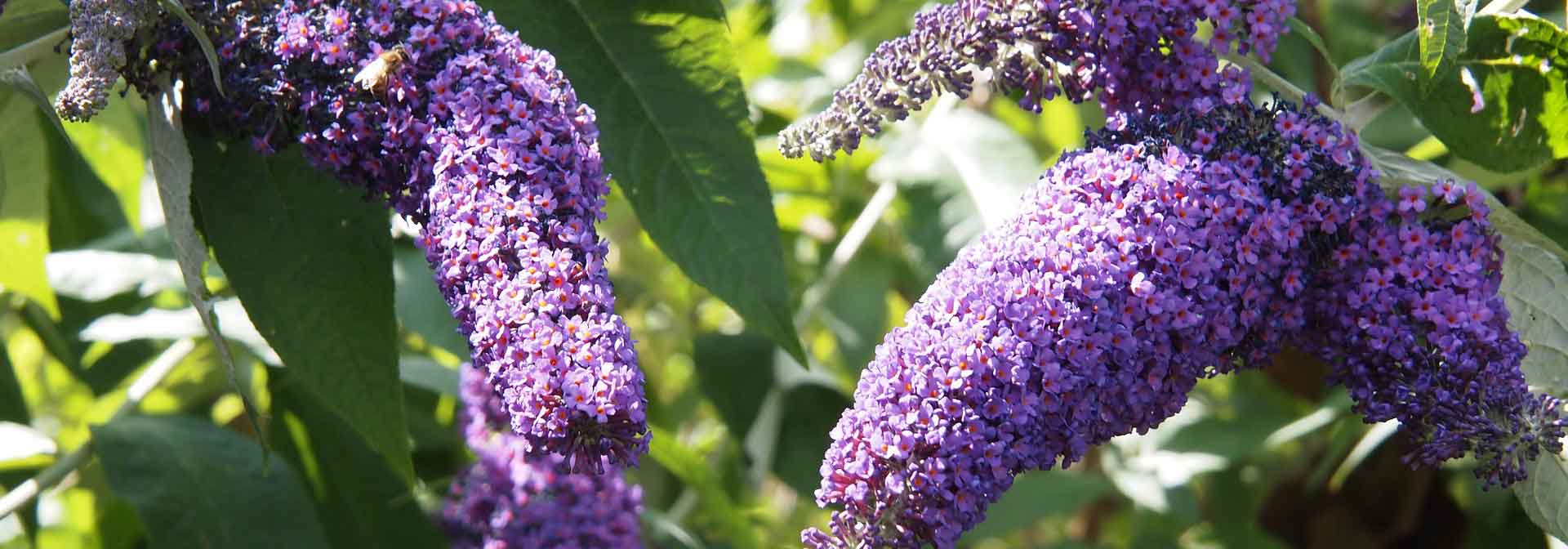
The complete guide to growing butterfly bush
Contents
Butterfly bushes or Buddleias in a nutshell
- They thrive in sunlight and adapt to poor soils for maximum versatility
- They offer long and abundant flowering throughout the summer
- Very simple to maintain with a short pruning in spring
- Fast-growing to quickly form beautiful plant screens
- Hardy and robust, they withstand urban pollution very well, perfect for city gardens
A word from our expert
Often referred to as “Butterfly bush”, Buddleia are beautiful flowering bushes whose sweet fragrance irresistibly attracts many butterflies.
While the most well-known is Buddleja davidii or David’s Buddleia, from which many cultivars such as ‘Black Knight’ or the white Buddleia ‘White Profusion’ are derived, there are numerous varieties, all equally interesting, such as B. alternifolia. Not to mention the hybrids derived from B. x weyeriana, some of which, like ‘Sungold’, flower orange-yellow, and the dwarf Buddleias (‘Blue Chip’, ‘White Chip’…) perfectly suited for pot culture.
Renowned for their ability to colonise quickly any fallow land, Buddleias have a reputation as invaders, which the new sterile varieties like Buddleia ‘Lilac Chip’ now contradict!
From July to October, sometimes in winter, the Buddleias in white, lilac-purple, yellow, pink, or even indigo blue, offer panicles of fragrant flowers in varied colours. All Buddleias are appreciated for their flowering supported by green or silver foliage, whether it is spring, summer, autumn, or winter.
They are among the flowering bushes that are the most easy to grow! They thrive in sun in any well-drained soil. With rapid growth, they quickly form beautiful floriferous and vegetative screens, provided they are pruned properly, short and at the end of winter!
In isolation or grouped in free hedges with other bushes, in large romantic pots or in sunny rockeries, these butterfly trees adapt to all gardens as well as to small spaces. Their versatile nature and resistance to pollution make them essential in all naturalistic and rustic gardens and in city gardens. They also make beautiful summer bouquets with a wild charm.
With their unconventional look, these generous bushes deserve a prominent place in your garden. Planting, maintenance, pruning of Buddleias, here are all our tips for a beautiful flowering season.
Botany
Botanical data
- Latin name Buddleja
- Family Buddlejaceae
- Common name Buddleia, Butterfly bush, Summer lilac
- Flowering May to November
- Height 0.60 to 6 m
- Exposure Sun, partial shade
- Soil type all
- Hardiness Variable depending on species, from -7 to -25°C
Buddleias, more commonly known as “Butterfly bushes”, are shrubs native to riverbanks, rocky regions, and thickets in Asia (particularly China and Tibet), Africa, and America.
The genus includes around a hundred shrubs, trees, and climbing plants, which can be evergreen, semi-evergreen, or deciduous. There are also a few herbaceous perennials. The most common species is Buddleja davidii, David’s Buddleia or Father David’s Buddleia, which comes in numerous cultivars such as ‘White Ball’, ‘Summer Beauty’, and some of which are sterile like ‘Blue Chip’.
Today, there are nearly 300 cultivars, of which 60% are descendants of B. davidii, as well as hybrids derived from this species. Not to mention those from B.x weyeriana (‘Sungold’, ‘Flower Power’, ‘Moonlight’).
There are also beautiful dwarf varieties or miniature models of Butterfly bushes, hardy and non-invasive, that do not exceed 1.20 m at maturity, such as Buddleja davidii ‘Nanho Blue’, B. ‘White Chip’, and ‘Lilac Chip’.
 The fragrant, nectar-rich flowers of Buddleias irresistibly attract butterflies, hence the nickname “butterfly bush”!
The fragrant, nectar-rich flowers of Buddleias irresistibly attract butterflies, hence the nickname “butterfly bush”!
Their size varies depending on the species, ranging from 90 cm to 6 m in height:
- large (4 to 6 m): Buddleia globosa, Buddleia auriculata, Buddleja colvilei
- medium (4 m): Buddleja macrostachya, Buddleja alternifolia
- small (1.50 to 3 m): Buddleja x weyeriana, Buddleja davidii, Buddleia Lochinch, Buddleja crispa
Most Buddleias are vigorous shrubs that offer good hardiness and withstand cold well, some at temperatures below -20°C, except for Buddleja colvilei, which is sensitive to severe frosts. They are also not afraid of high heat or summer drought and are very resistant to pollution.
They grow throughout France, self-seeding, quickly colonising any vacant land, particularly David’s Buddleia, often even in places abandoned by humans, where few plants grow; motorway edges, railway lines, walls of industrial wastelands… Buddleias have a great capacity for dispersion: their seeds disperse easily.
For these reasons, these shrubs have a reputation as invaders and are considered invasive in Europe and certain regions of France. Recent selections produce sterile varieties (‘White Chip’, Buddleja x weyeriana ‘Sungold’) that have the advantage of not spreading.
The habit varies depending on the species but always maintains a light and elegant appearance; generously bushy in Buddleja davidii, weeping in B. alternifolia, whose arched branches bend under the weight of the flowers, bristly and rounded in dwarf forms, spreading and compact in others. They can become narrower and upright with age or, conversely, “open up”.
Their growth is rapid, and they can quickly reach 3 to 5 m in height and 4 m in spread in 5 to 6 years. However, their lifespan of about ten years or more is relatively short.
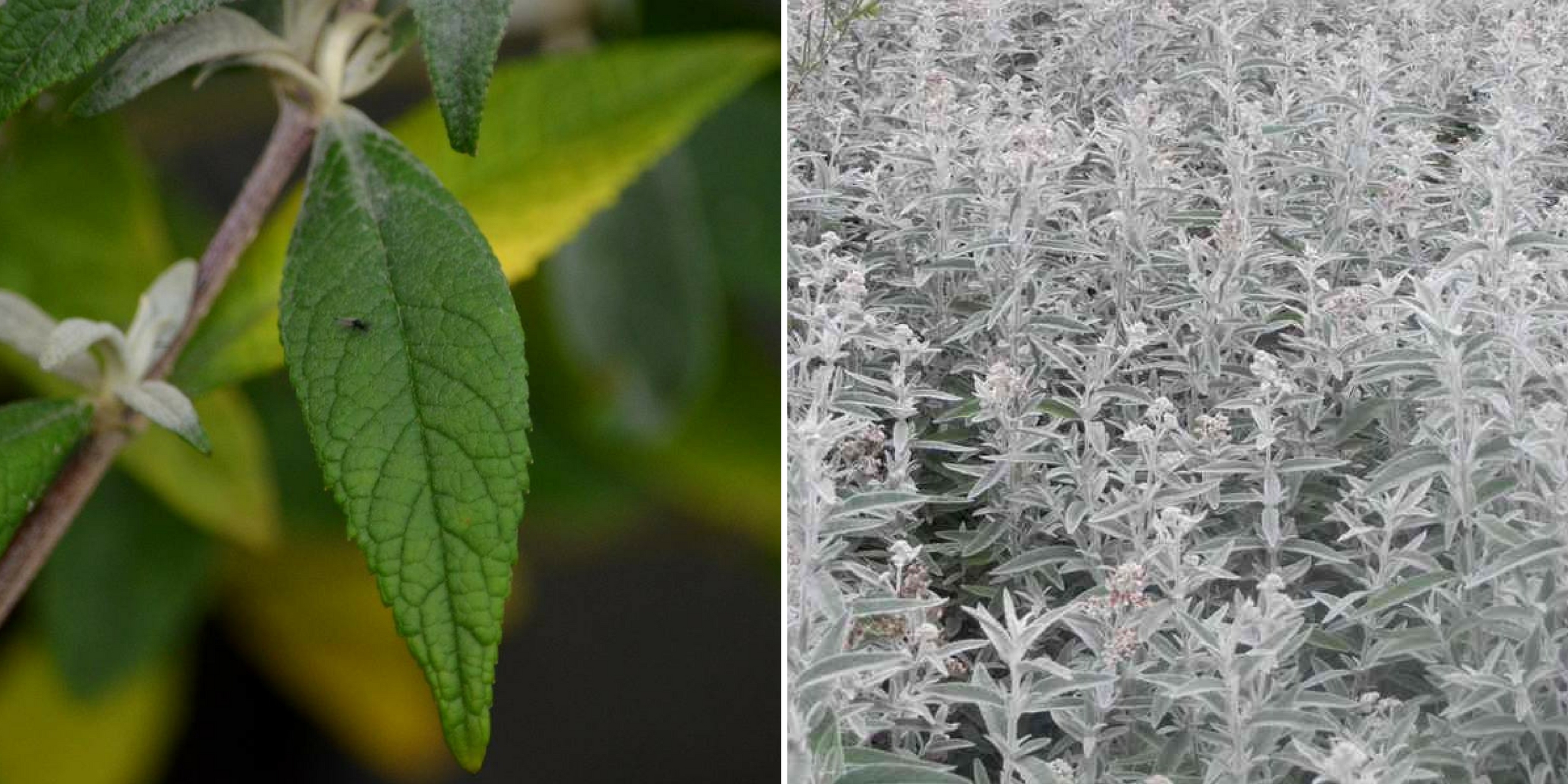 From the pointed green leaves of Buddleia davidii to the silver foliage of Buddleia ‘Silver Anniversary’
From the pointed green leaves of Buddleia davidii to the silver foliage of Buddleia ‘Silver Anniversary’
In Buddleias, the foliage is deciduous or more or less persistent depending on the species and climate. Decorative with its graphic and quite lush aspect, it provides a beautiful screen of vegetation. Buddleias are primarily shrubs with opposite leaves, elongated to ovate, often broad and sometimes dentate. The leaves, measuring 8 to 30 cm long, are pointed, light to dark green, or silver-green on the fuzzy underside.
Sometimes these leaves may green or darken at maturity. Some Buddleias have green leaves on top, almost white underneath, remarkably decorative when the breeze lifts them.
The Buddleia ‘Silver Anniversary’ is a new variety that bears completely silver-grey leaves. Others, like Buddleia davidii ‘Masquerade’, develop beautiful variegated foliage, from which the flowers emerge.
From June to September-October, the branches of Butterfly bushes are covered with beautiful terminal panicles of small flowers in varying colours from lilac pink to intense purple, including orange. A continuous flowering, from early summer to the first frosts for most, makes these shrubs remarkable and has earned them the nickname “summer lilac”.
Buddleias also differ according to their flowering period; early, summer, or autumn, there is a Butterfly bush to bloom in every season!
There are earlier and later varieties; Buddleja officinalis flowers in winter from January to April, B. Lochinch is the latest, with flowering starting in the heart of summer, in August.
The more or less arched branches usually bear dense spikes of upright flowers, ranging from 4 to 40 cm long, depending on the varieties. These inflorescences are more or less continuous, and in some Buddleias, they sometimes take on surprising intermediate globular forms.
 Buddleia davidii-Buddleja x weyeriana ‘Sungold’ -Buddleja macrostachya
Buddleia davidii-Buddleja x weyeriana ‘Sungold’ -Buddleja macrostachya
The distinctive feature of Buddleja weyeriana is its yellow to violet ball-shaped flowers, that of the wild Buddleja colvilei has very large pendulous pink or red flowers, bell-shaped, and that of B. globosa presents orange round flower heads gathered in graceful panicles. The Buddleja macrostachya is distinguished by its long drooping panicles made up of small pale yellow flowers with an orange throat.
The colours range from the lightest to the most intense, depending on the species and varieties. Next to the classic mauve-lilac of the wild roadside species, the numerous varieties derived from it offer a more diverse palette. Buddleja davidii ‘White Profusion’ bears large pure white panicles with a yellow eye, Buddleja ‘Nanho Purple’, purple with an orange eye, Buddleja ‘Flower Power’ offers a bicolour display with its spikes ranging from soft orange to violet pink.
Also unique are the incandescent bright pink of Buddleia ‘Miss Ruby’, the deep midnight blue of Buddleia davidii ‘Adonis Blue’.
The flowering of these shrubs has two appreciated qualities: it is melliferous and exudes a sweet honey fragrance. The pleasantly scented flowers, rich in nectar, are highly visited by foraging insects and irresistibly attract butterflies, hence the nickname “butterfly bush”!
They add a casual and natural touch to summer bouquets.
In the garden, Buddleias are low-maintenance shrubs that are not demanding about soil type. They enjoy well-drained soils, even tolerating poor, calcareous soil. They prefer to be planted in full sun, sheltered from strong winds. Their rather brittle stems are sensitive to overly windy situations.
They derive their name “Buddleja” from that of the English botanist Adam Buddle, who discovered these shrubs in China in 1869.
Planted alone or in groups, Buddleias deserve their place in all gardens, whether naturalistic or urban.
They work wonders in free hedges mixed with other Buddleias or shrubs like Hibiscus, Viburnums, Ceanothus, and Weigelas, on slopes or at the back of borders. They create magnificent backdrops for old roses and harmonise perfectly with summer perennials, Lupins, Lavateras, Delphiniums, Oriental Poppies, in a mixed border.
They are good partners for Symphoricarpos or shrubby potentillas. They form airy screens of vegetation and offer beautiful colour combinations with Tamarisks and smoke trees.
With their branches covered in mauve, pink, white, or blue spikes, they can be found in fresh lilac/white scenes, contrasted blue/lemon yellow with euphorbias, for example, or in blue hues with clematis, yarrow, bellflowers, and Thalictrum.
Some modest-sized varieties are particularly suited for small spaces and container cultivation mixed with hardy geraniums, salvias, phlox, or lavenders.
Buddleia: species and varieties
The genus Buddleja includes around a hundred species and nearly 300 cultivars. The most common and sold in nurseries is Buddleia davidii, which has given rise to numerous cultivars and hybrids.
The choice is vast and can be guided by size, colour, early or late flowering period, or the sterile nature of the variety.
The most popular

Buddleja davidii Nanho Blue - Butterfly Bush
- Flowering time July to October
- Height at maturity 1,50 m
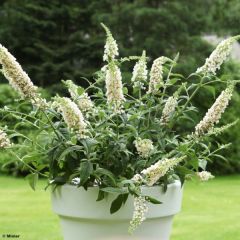
Buddleia White Chip - Butterfly Bush
- Flowering time August to October
- Height at maturity 90 cm
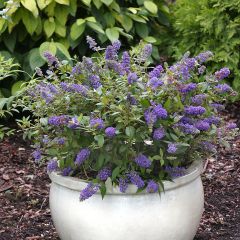
Buddleja Blue Chip - Butterfly Bush
- Flowering time August to October
- Height at maturity 1 m
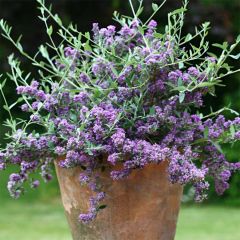
Buddleja alternifolia Unique - Butterfly Bush
- Flowering time July to November
- Height at maturity 1,20 m
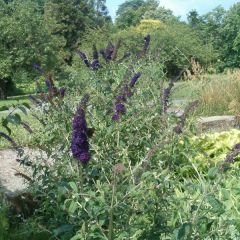
Buddleia davidii Black Knight - Butterfly Bush
- Flowering time August to October
- Height at maturity 3 m
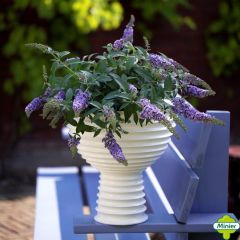
Buddleja davidii Lilac Chip - Butterfly Bush
- Flowering time August, September
- Height at maturity 70 cm
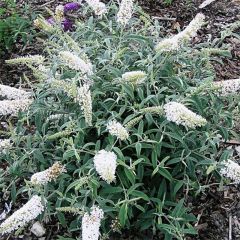
Buddleja davidii White Ball - Butterfly Bush
- Flowering time July to October
- Height at maturity 1,50 m
Our favourites
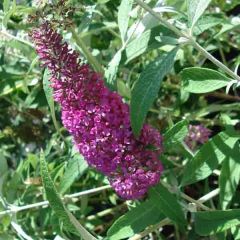
Buddleia davidii Summer Beauty - Butterfly Bush
- Flowering time August to November
- Height at maturity 3 m
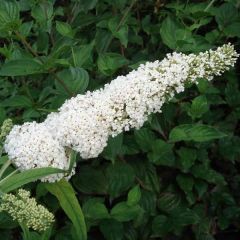
Buddleja davidii White Ball White - Butterfly Bush
- Flowering time July to October
- Height at maturity 3 m
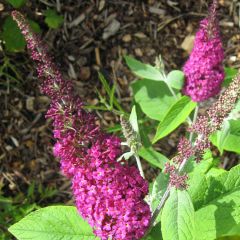
Buddleia Miss Ruby - Butterfly Bush
- Flowering time August to November
- Height at maturity 1,20 m
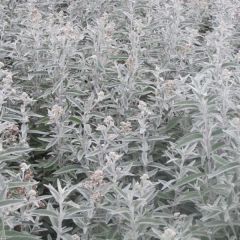
Buddleja Silver Anniversary - Butterfly Bush
- Flowering time August to November
- Height at maturity 1,50 m
Another interesting variety
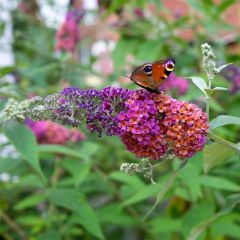
Buddleja Flower Power - Butterfly Bush
- Flowering time August to October
- Height at maturity 2 m
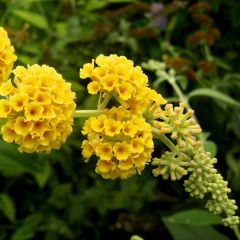
Buddleja x weyeriana Sungold
- Flowering time September to November
- Height at maturity 3 m
To choose your buddleia from the many varieties we offer, follow our advice: “Which buddleia or butterfly bush to choose?”
Discover other Buddleja -Butterfly bush
View all →Available in 4 sizes
Available in 1 sizes
Available in 2 sizes
Available in 2 sizes
Available in 2 sizes
Available in 1 sizes
Available in 2 sizes
Available in 1 sizes
Available in 1 sizes
Available in 4 sizes
Location and planting conditions
Location Choice
These versatile bushes adapt to various garden environments, whether in solitary, in a bush mass, or in natural hedges. Their main requirement is a sunny exposure, ideally sheltered from strong winds to protect their fragile stems.
They are not fussy about soil quality, as long as it is well-drained.
With their rapid growth, these bushes require suitable space. They can quickly reach considerable heights, so make sure to allocate the necessary space.
Ideal Time for Planting
The planting period for Buddleias is quite flexible, ranging from September to April.
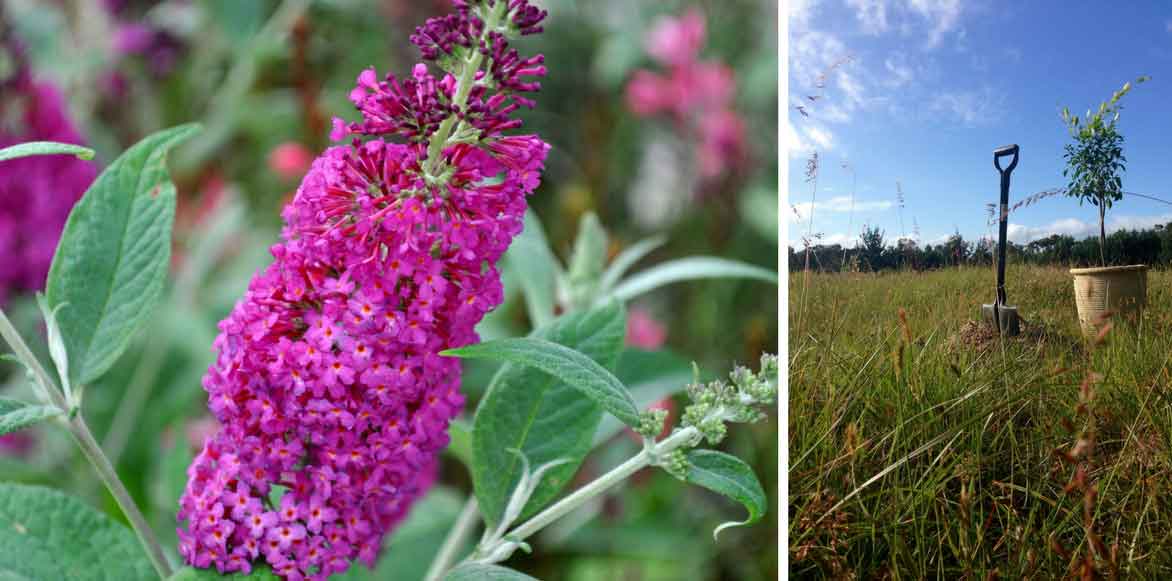
Maintain a density of 1 Buddleia per m²
Tips for Successful Planting
Buddleias are bushes that are not demanding regarding soil type; they simply need sunlight and well-drained soil. Flowering occurs as early as the first summer. For hedge planting, maintain a distance of 1 m to 1.20 m between each plant. Regular watering during the first season is also recommended.
When planting in open ground, drain the soil if necessary, particularly using large gravel mixed half and half with your topsoil. Water regularly during the first summer.
Plants in large pots like Buddleia ‘White Chip’ or ‘Nanho Blue’ will require regular watering and a fertiliser application in spring or summer to stimulate flowering.
→ Learn more about growing Buddleia in pots in our advice sheet!

Potted Buddleias need more attention: fertiliser to promote flowering and regular watering, especially in summer.
For more information on planting Buddleia, visit our sheet: “Buddleia, butterfly tree: planting and caring for”
Specific care and maintenance of Buddleia
Hardy down to -20°C, resistant to both drought and pollution, butterfly bushes are incredibly robust. They require little maintenance: no fertiliser, minimal watering, making them the perfect companions for gardens without gardeners!
Importance of pruning for flowering
There is often a fear of pruning Buddleias. However, they bloom remarkably throughout the summer, provided they are pruned correctly. Pruning allows for a generous flowering, the regrowth of branches, and helps maintain an elegant habit, not bare at the base. We recommend severe pruning: Buddleja davidii, in particular, while other species do not require such radical pruning.
When and how to prune?
The ideal time for pruning is in March, before the resumption of growth, and severely cut back to 30-50 cm the shoots coming from the ground to encourage vigorous growth. You will find more details in our advice sheet: “Buddleia, butterfly bush: how to prune it properly”.
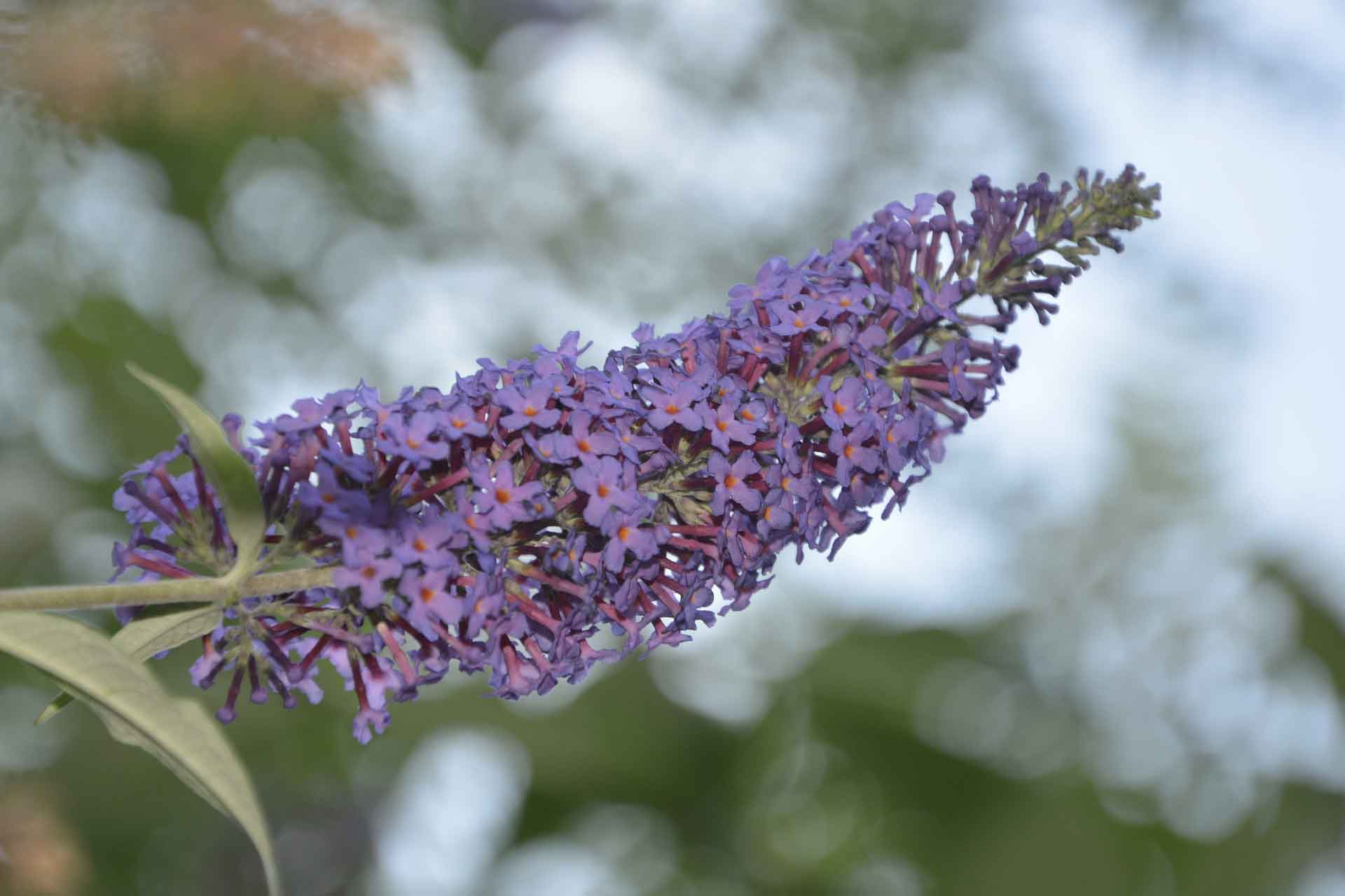
The more you prune, the more floriferous, bushy, and vigorous the Buddleias will be.
Possible diseases and pests
Buddleias are resilient flowering bushes that, once well established, have few natural predators. However, they are not completely free from pest problems such as stink bugs, caterpillars, vine-plants, and red spiders.
→ Also read: Diseases and pests of Buddleia – butterfly tree.
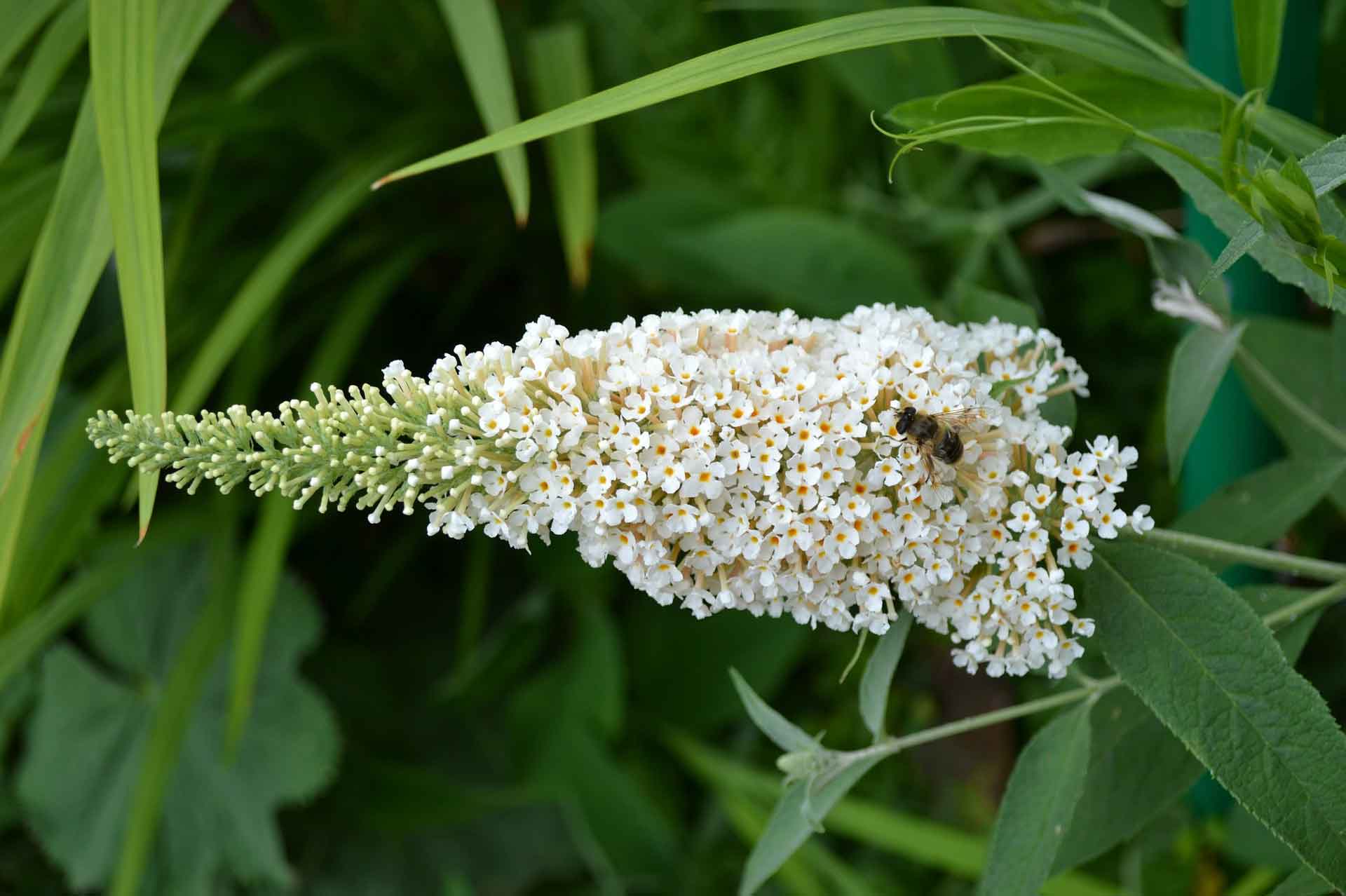
Buddleias have few enemies
Multiplication
Propagation by cuttings of Buddleias is a simple and effective method to reproduce these bushes.
- Proceed at the end of summer
- Take cuttings of 15 cm from semi-ripe wood
- Plant them in a mixture of river sand and potting soil
- Rooting occurs quickly in about 2 months
For more information, please consult our advice sheet: “Buddleia, butterfly bush: how to succeed with your cutting” and our video: Propagating Buddleia
Associating the butterfly tree
Buddleias easily integrate into various garden environments, whether in isolation, in hedges, or in planters.
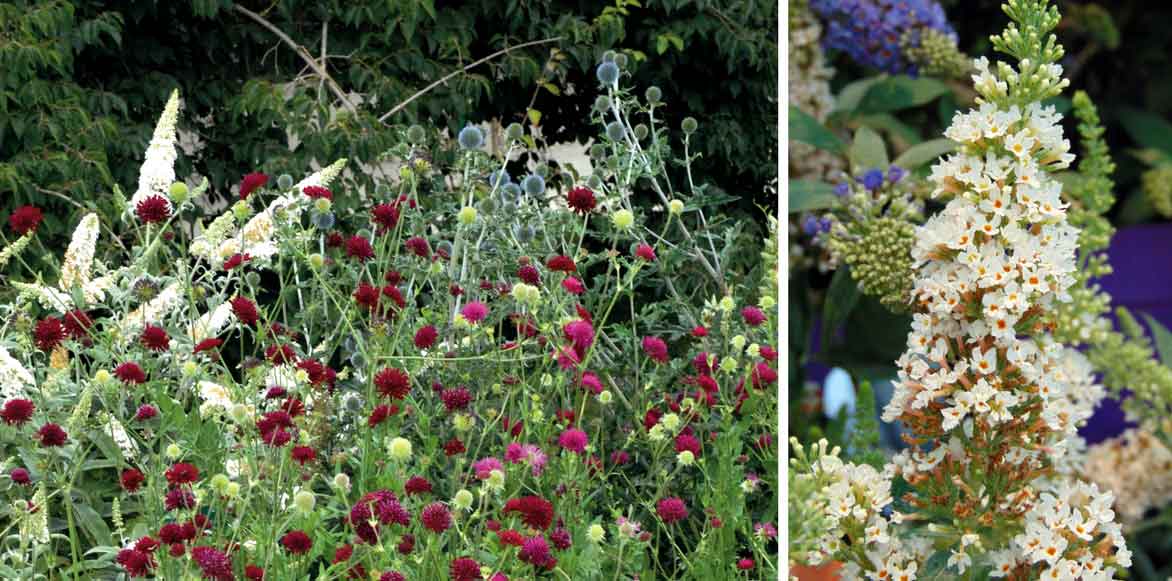
White Buddleia-Knautia-Echinops
They pair well in flowering hedges with all types of bushes such as Ceanothus, weigelias and Althaeas, creating stunning backdrops for old or English roses. And of course, mixed with other Buddleias.
In the background of a mixed border of sun-loving perennials (purple sages, lupins, delphiniums, Oriental poppies, echinaceas…), they create lush and generous displays at the heart of summer.
Their varied colour palette makes them ideal for compositions in shades of blue or contrasting scenes.
The Dwarf butterfly bushes ‘White Ball’ or Buddleia alternifolia ‘Unique’, are particularly suited to small spaces and pot cultivation on terraces and balconies.
Their elegant silhouette pairs well with Tamaris, to Symphorines and they also make good partners for smoke trees.
Their inflorescences add a natural and wild charm to summer bouquets.
For more pairing ideas, check our advice sheet: “Buddleia, butterfly bush: 8 ideas for combinations”
Useful resources
- The most beautiful Butterfly Trees are on our site!
- Get inspired on our blog by discovering our tips for creating a magnificent flowering hedge with Buddleias
- Do you love blue-flowering bushes? Check out our article: 8 blue-flowering bushes you must have in your garden
- Discover other shrubs with remarkable summer flowering: 10 summer-flowering shrubs you must have in your garden!
- 6 unusual Buddleias that stand out
- 8 dwarf Buddleias
- 7 evergreen Buddleias
- Botanical Buddleias: shrubs to discover
- The best white Buddleias; The best purple, mauve, and violet Buddleias for your garden; For a sunny summer: the most beautiful Buddleias with yellow and orange flowers; The best pink Buddleias to brighten up the garden
Frequently asked questions
-
My Buddleia isn't flowering, what should I do?
The only imperative for keeping beautiful Buddleias is pruning, as unpruned Buddleias will eventually become bare, flower less, and take on a lanky habit. For Buddleias, pruning is very useful, even necessary. The more you prune, the more floriferous and vigorous they will be. Pruning stimulates their flowering, encourages the regrowth of branches, and helps maintain an elegant habit with a well-branched base. Prune without hesitation, severely, Buddleia davidii each year during the dormant period; the other species, B. alternifolia, colvilei, and globosa, do not require such strict pruning. In March, before the resumption of growth, cut back the shoots emerging from the ground severely to 30-50 cm. Shorten the previous year's shoots to 5-10 cm from the old wood. You can also carry out summer pruning in May-June by cutting the young shoots before the flowers appear to delay and stagger the flowering, and at the end of August-beginning of September to induce a second flowering.
- Subscribe!
- Contents


































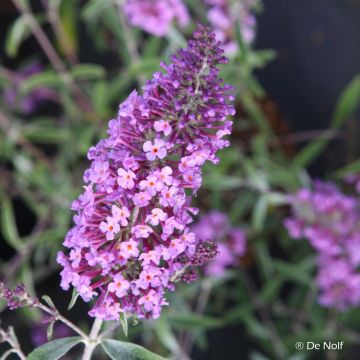
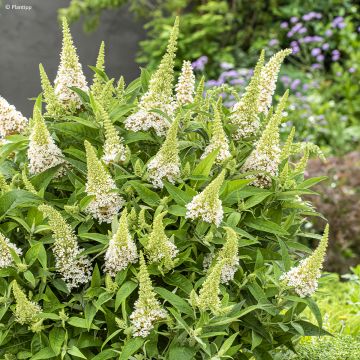
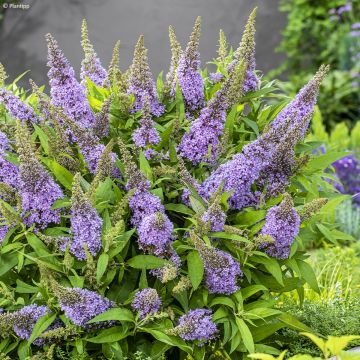

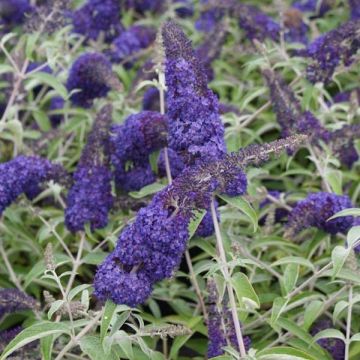

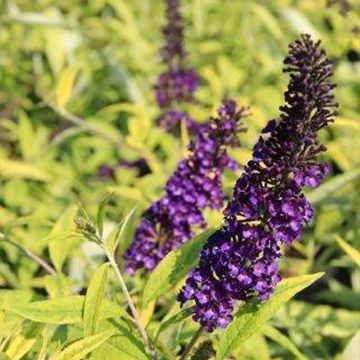

Comments